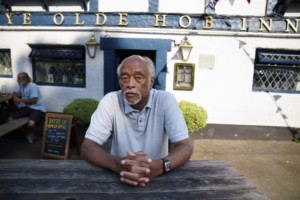Museums and other historical centers are part of NYSERDA study looking at impacts of changing weather patterns
Across the state, extreme weather — including hurricanes, rising sea levels and the heat island effect — are changing the way people live. But the impacts of climate change will also affect economies and culture, prompting the state Energy Research and Development Authority (NYSERDA) to launch a two-year assessment of the state’s future.
Around 80 people in different parts of the state are working on sections of the study examining climate impacts on transportation, agriculture, energy and more. Last summer, Long Lake Town Historian Hallie Bond joined the team to research how climate change will alter community culture — including historical societies and museums.
The New York State Climate Impacts Assessment is aimed at policymakers, Bond said, and will be accessible enough for people outside of scientific fields to understand. The report was initially set to finish early this year but is now expected this summer, according to NYSERDA spokesperson Alice Oldfather.
Bond said she welcomed the opportunity to take part in the assessment because it contributed to the broader fight against climate change. “The only way we’re going to deal with it is (to) tackle it,” she said. “We can’t just sit back and throw up our hands and say, ‘It’s too big.’”
Bond, who was curator for the Adirondack Museum (now known as the Adirondack Experience) for 30 years, is part of a team identifying societal and economic issues that will worsen with climate change. One immediate problem is the location of some historic sites and buildings. On top of being poorly funded, Bond said, many historical societies are built near water which can leave them vulnerable to flooding.
“So all of this combines to put them at great risk because they usually aren’t prepared for issues of climate change like flooding and a lot of rain in particular, and they don’t have the money to do anything about it,” she said.
The Penfield Museum and Homestead, located near Ticonderoga, is already threatened by the effects of climate change, Bond said: The nearby dam responsible for Penfield Pond was damaged after Hurricane Irene in 2011, and it may require removal.
Combing through science journals and records, Bond said she was able to see the effects of climate change at a more detailed level. Now, the climate impact on culture is impossible to miss, she said.
“You hear about these horrible stories of floods in Bangladesh and storms in the south and big fires in the west,” she said. “But here we sit in the Adirondacks, except for this weird winter, basically not seeing the problem.”
The assessment will be published on NYSERDA’s website and will include projections about the state’s future climate, how the state’s economy is impacted by climate change and a peer-reviewed report with adaptation strategies.
“Climate change is here, it’s real and no state has felt its impact more than New York,” Gov. Kathy Hochul said in a press release announcing the assessment’s launch. “From hurricanes like Sandy and Ida, to seven feet of snow in Buffalo, we have seen our weather continue to grow more extreme each year.”
A version of this story appeared in the Adirondack Explorer, a nonprofit news organization that covers the Adirondack Park. Its journalism is published in a bimonthly magazine and daily on adirondackexplorer.org.




